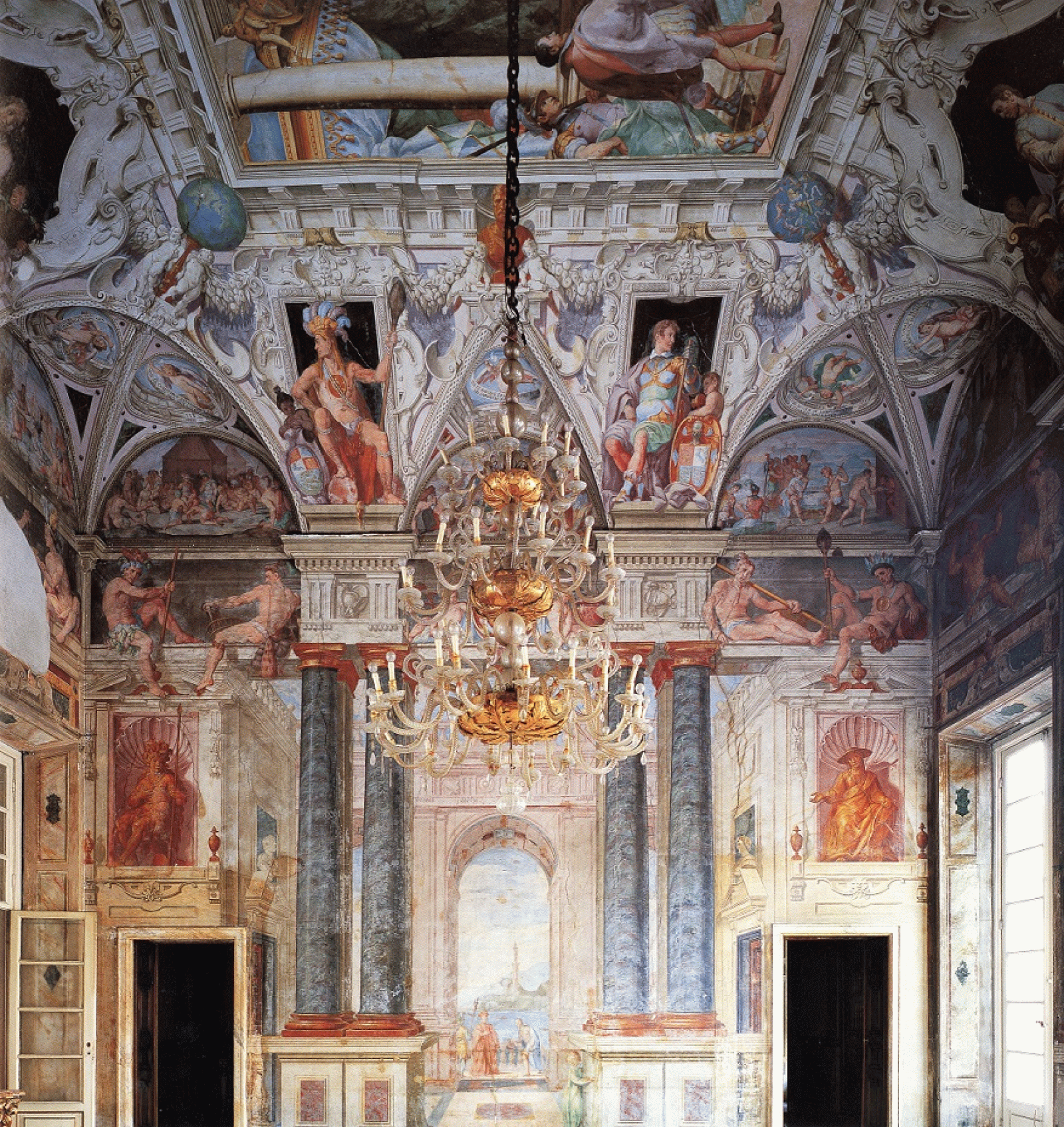Summer school
„Superba per uomini e per mura“ –
Urban space and pictorial politics in the oligarchic Republic of Genoa
Study course offered by the Kunsthistorisches Institut in Florenz – Max-Planck-Institut, October 12 and 19, 2021
Organisation: Dr. Stephanie Hanke, Prof. Dr. Alessandro Nova, Dr. Mandy Richter, Prof. Dr. Gerhard Wolf

“La plus mal connue – et la plus difficile à comprendre – des villes marchandes italiennes” – this is how the French Annales characterised the state of research on Genoa as recently as the 1980s. Indeed, the Ligurian port city continues to be an underrated entity receiving relatively little attention in art history on an international level. Yet given the city’s complexity, it deserves more in-depth study. For centuries, Genoa not only dominated the naval wars of the Mediterranean, wide sectors of long-distance trade, and European banking, but it also boasts to this day one of the largest old town districts in Italy and offers a large number of uniquely concentrated palaces, church buildings and semi-urban villas.
The Kunsthistorisches Institut in Florenz’s 2020 study course hopes to contribute to a better understanding of la Superba – as the maritime and mercantile Republic was rightly called – and its aesthetic qualities, spatial properties, and political organisation. We will focus on the long secolo d’oro dei Genovesi in the sixteenth and seventeenth centuries, which saw a spectacular economic and artistic boom in Genoa. Andrea Doria’s alliance with Charles V opened up new trade routes for the city as well as access to the financial operations of the Spanish ruling family. At the same time, the internal situation of Genoese society, which had been characterised by family disputes and foreign domination, was stabilised by aristocratic-republican rule. The resulting oligarchic ruling class was comprised of noble families who were both competitors and bound together as a “capitalist interest group” avant la lettre. These families had newfound needs to display their wealth and status given Genoa’s changed foreign and domestic policy situation. The nobility invested heavily in the construction of palaces and villas, which were often decorated with elaborate fresco cycles that glorified the historic achievements of particular noble families, from battlefield victories to the discovery of America by Columbus. Rubens already recognised the exceptional quality of the Genoese noble residences in the seventeenth century, when he presented them as engravings in his Palazzi di Genova to northern European nobility as models of modern palaces that befitted their social status. In Genoa, the unique government use of private palaces for the accommodation of official guests of the Republic – a system for which Ennio Poleggi aptly coined the ambiguous phrase reggia repubblicana – offered a special incentive for such investments by the wealthy nobility. In marked contrast to the maritime Republic of Venice – which was simultaneously Genoa’s rival, model, and antitype – state and private display of splendour went hand in hand within a system of continuous balancing and reframing of claims to power within the oligarchy.
Particular attention will be devoted to this interplay of public and dynastic interests, as the study course aims to examine art patronage and the urban gestalt of Genoa based on the city’s specific historical and social conditions. We will focus on architecture, furnishing and decoration of selected city palaces and villas, the Doge’s Palace and the famous Bank of San Giorgio, as well as on the investments of the uomini privati in church buildings, including the family churches so characteristic of Genoa. We will look at the visual strategies of political self-representation in murals and façade paintings, portraits, and honorific statues. Early modern restructurings and transformations of the medieval townscape will be examined through the Strada Nuova and Via Balbi as well as the Piazza Banchi. By looking at individual objects within a system of competing clients we seek to understand the artistic and political alterity of the city of Genoa and the ways in which its structures reverberate into contemporary European society.
We regret to inform you that it is no longer possible to register for this event as all available places are already booked.
12 – 19 October 2021
We regret to inform you that it is no longer possible to register for this event as all available places are already booked.
Notice
This event will be documented photographically and/or recorded on video. Please let us know if you do not agree with the Kunsthistorisches Institut in Florenz using images in which you might be recognizable for event documentation and public relation purposes (e.g. social media).


